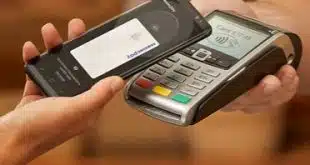New data from Visa Europe indicate that while contactless payments are still a small portion of European card-based payments, they’re growing fast and likely far exceed the current level of U.S. contactless payments.
London-based Visa Europe, a bank-owned licensee of Visa Inc., on Monday said there are 2.6 million contactless terminals in the 37 countries it serves. That’s more than three times the estimated 700,000 contactless-accepting locations in the U.S. as of this spring. About 25% of the U.S. locations are vending machines.
The payment card networks don’t release U.S. figures about contactless card transactions or payment volume, but experts agree that current numbers are tiny. That’s because few contactless debit or credit cards are in circulation, and mobile payments, which generate contactless transactions and are growing fast, are starting from a very small base.
Visa Europe’s new numbers provide some insights about contactless payments in a region that, while it has some major differences from U.S. payments, still has a high share of non-cash consumer transactions. Visa Europe cardholders spent €1.6 billion on contactless payments in March ($1.8 billion at Monday’s exchange rate), three times the volume from March 2014.
Visa Europe cardholders generated 1.1 billion contactless transactions over the past 12 months, accounting for €12.6 billion ($13.9 billion) in charge volume, the association says. While more than a billion contactless transactions is a milestone, they still represent just 3% of Visa Europe’s 37 billion transactions for all of 2014.
In Europe, where EMV chip cards are firmly established, many issuers first offered contact chip cards in which the card is inserted into an EMV terminal. But EMV cards with contactless functionality also included are gaining share because their fast transaction speeds make them ideal for use at grocery stores, quick-service restaurants, convenience stores, and mass transit. More than 130 million Visa contactless-enabled cards from 240 issuers now circulate in Europe.
The United Kingdom is Visa Europe’s single biggest contactless market, with €330 million in payments volume ($365 million) in March, or 21% of the total, on 52.6 million transactions. Britain had 49.6 million Visa-branded contactless cards in March, 38% of Visa Europe’s total and up 37% from a year earlier, and 410,000 contactless terminals.
London’s massive Transport for London (TfL) subway and bus system now accepts contactless payments. Visa Europe says more than 100 million trips on TfL have been paid for with contactless fare media, 85% of them Visa cards.
Spain has the most contactless terminals in Europe, 593,000.
Despite the dearth of reliable figures, contactless transactions and payment volumes in the U.S. are growing rapidly because of the proliferation of mobile-payment services. New systems such as Apple Inc.’s Apple Pay and Google Inc.’s revamped Google Wallet, now known as Android Pay, are making their way into their market, and they use near-field communication (NFC) technology to generate contactless transactions. Other contactless schemes such as Starbucks Corp.’s popular mobile-payments service use bar codes.
With the multiyear conversion of U.S. cards to the EMV chip standard now under way, industry executives expect most such cards to be of the contact variety initially. But experts say more issuers will begin offering dual-interface cards, which support both contact and contactless payments but cost more than contact-only cards, within several years.



